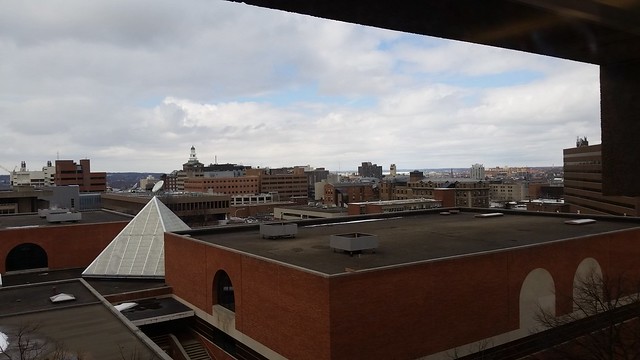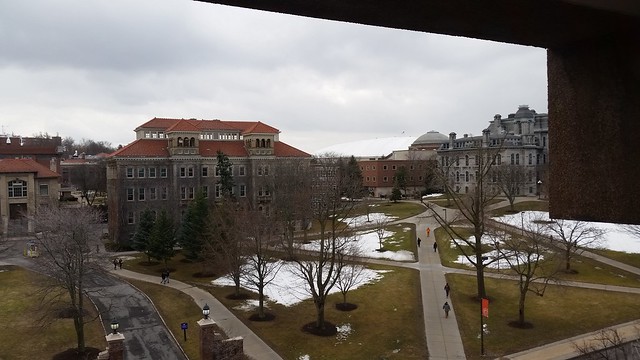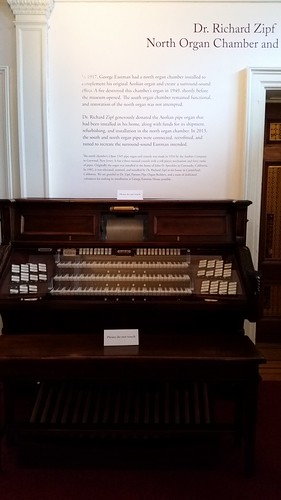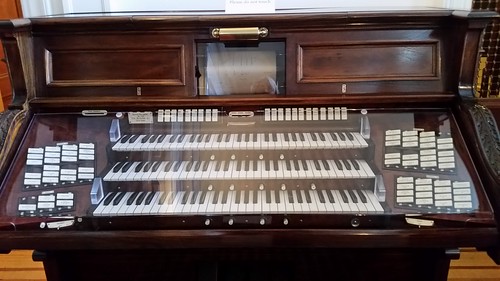By Pamela A. F. Priest
In January 2012, former Syracuse Post-Standard columnist and current OHA volunteer Dick Case sent an email to OHA inquiring about “The Lyons Settlement” of Syracuse. Research yielded a booklet entitled Home Beautiful: The Transition of a Shabby House. This booklet detailed the history and renovation of resident Aaron Hoyt’s “Shabby House,” originally located at 10 Baker Street (now Clinton Street), a very short street off W. Adams Street in 1851. Imagine my surprise when I realized Aaron Hoyt was my four great-grandfathers! This fact served to make my research and the story even more interesting and personal.

Anna E. Lyons crayon drawing from her 1909 journal, showing the homes built on West Adams street, including Aaron Hoyt’s home in the mid-right foreground. A newspaper caption read, “Fourteenth Ward in 1854, Old Crayon Showing the Old Sixth Ward from Baker Street to Stearns Factory, With Binghamton Depot to the Right.”
Aaron Hoyt built his home on Baker Street probably using lumber cut from the land he owned in Sentinel Heights (then called East Hill). All the lumber was hewn and scored by hand and the entire structure was put together using handmade wooden pegs. According to Newton King, former Town of LaFayette historian, Aaron Hoyt was a local carpenter who also was responsible for the construction of several of the larger buildings located in the Village of Syracuse during the early 1800s. Unfortunately,
Aaron Hoyt died suddenly of “ague” in 1847, as noted in his son William Hoyt’s diary: “1847 August 26, Father & family return to Syracuse, father get down with ague”; “September 1 go to Syracuse & dig Potatoes for father”; “September 10, 11, 12 Father very Sick. Life despaired of. Sick with Summer complaint and Child Fever. Weather variable hot & cold. A sickly season in Syracuse”; “September 20 Aaron Hoyt, Sen. departed his life this Day at 4 o’clock PM in the full hope of a blessed immortality.”
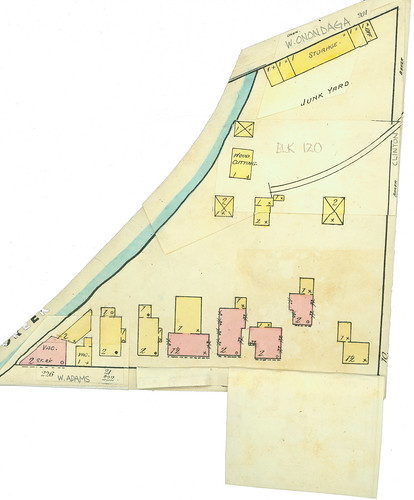
1882 Sanborn Map showing Aaron Hoyt’s home at 10 Baker Street on the corner of West Adams and Baker Street.
Aaron Hoyt’s wife, Sophia (Brooks) Hoyt, had her niece, Miss Mary S. Hoyt, a photographer, move into the home with her after her husband’s death. However, shortly thereafter, Sophia decided to rent the house. She eventually moved to Lexington, Kentucky, with two of her daughters, where she died on August 26, 1872. Son William Hoyt continued to collect rent for his family’s home. In 1880, he chose to sell the house and property to Mrs. William Lyons for $2,500, as documented once again in his diary. In 1882, Lyons built a concrete house in front of the little frame house erected by Hoyt so many years earlier. Unfortunately, the original house remained vacant and became very rundown. In 1934, after being given the moniker “Shabby House,” the Syracuse Home Improvement Campaign moved it to James Square, where it was totally renovated. That city program was created to provide work for local labor using local materials. Design features such as electric switches, phone outlets, washable wallpaper, rubber kitchen floor and clothes closets were included. Renovation costs came in at $3,850 with furnishings, appliances and decorative elements adding another $1,876. Local architect Webster Moulton oversaw the renovations. Decorations were provided by another local business, G.W. Richardson and Son, Inc., and a local landscaper provided the landscaping plan. Once completed, the public was invited to view the end results and thousands passed through the newly designed front entrance.
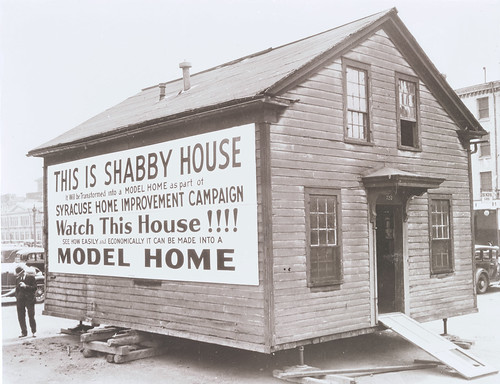
The house at James Square (James and North Warren Streets) so people could watch its transformation.
Several publications continued to follow the intriguing story of the “Shabby House.” In February of 1976, the Syracuse Herald-American featured the house, which was then owned by Dan and Jo-Anne Murphy, and in January of 1997, the Syracuse Post-Standard covered it. While rummaging in a shop in Seattle, Washington, one of the This Old House magazine writers found a copy of the 1934 booklet produced to detail the rebirth of the house. The booklet intrigued the writer to conduct further research resulting in a feature article for the Jan/Feb 1997 edition.
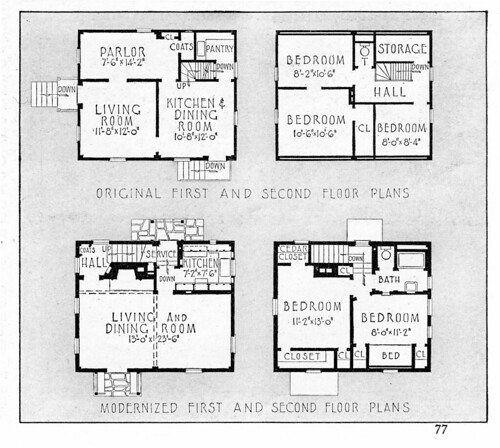
Illustration from article published in the December 1934 issue of Good Housekeeping magazine.
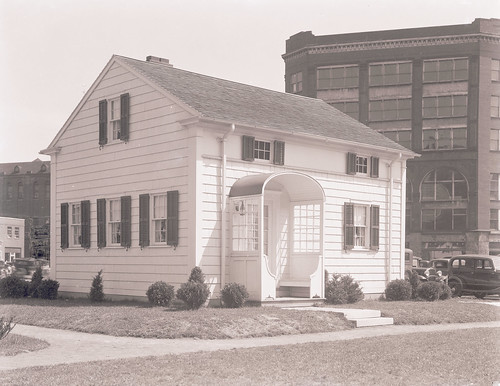
Aaron Hoyt’s home transformed from “Shabby House” to “House Beautiful.”
Today, Aaron Hoyt’s “Shabby House” still stands on Ashdale Ave. – a testament to the outstanding construction abilities and methods of its original builder and owner, Aaron Hoyt, in 1838.
Unedited version here!


